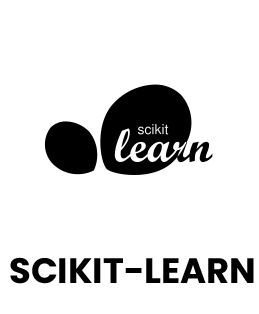1. What is One-Hot Encoding (OHE)?
Ans:
A method for transforming categorical data into a binary matrix is called one-hot encoding. The binary vectors that represent each category have one 'hot' (1) element and the remaining elements are 'cold' (0). The categories "red," "blue," and "green" in a "color" feature, for example, might be represented by OHE as [1, 0, 0], [0, 1, 0] and [0, 0, 1] accordingly. In machine learning, this approach is frequently used to deal with categorical variables.
2. What is the difference between Lemmatization and Stemming?
Ans:
Lemmatization produces the base or dictionary form of a word while stemming reduces words to their root form. Lemmatization creates a legitimate and logical word by taking into account the words meaning and context. Stemming simply chops off prefixes or suffixes potentially resulting in non-existent words. For example, lemmatization of 'better' would result in 'good', while stemming would reduce it to 'bet'.
3. What is Conditional Probability?
Ans:
The chance of a event happening given that another event has already happened is known as conditional probability. The formula P(A|B) = P(A and B) / P(B) is used to compute it. This concept is fundamental in various fields such as machine learning, statistics and finance, where the probability of an event is influenced by the occurrence of a previous event.
4. Describe the machine learning concept of overfitting.
Ans:
The process of overfitting is when a model learns the noise and outliers in addition to the underlying patterns in the training data, which results in poor generalization on fresh, untested data. Techniques like cross validation, regularization and pruning are employed to prevent overfitting, ensuring the model performs well on real-world data.
5. How would you respond to a dataset that contains missing data?
Ans:
There are a number of methods for dealing with missing data, such as using algorithms that are naturally able to handle missing data or imputing values that are missing using the mean, median or mode. Alternatively, depending on the amount of missing data and how it affects the analysis, rows or columns with missing values may be eliminated.
6. What are the trade-offs between Precision and Recall?
Ans:
Metrics such precision and recall are used to assess how well categorization models work. Recall gauges the capacity to identify every positive case, whereas precision gauges the accuracy of positive predictions. Increasing precision often reduces recall and vice versa. The balance between them depends on the specific application and the cost of false positives and false negatives.
7. What is the difference between XGBoost and Random Forest algorithms?
Ans:
XGBoost is a gradient boosting technique that produces a high predicted accuracy by successively building an ensemble of decision trees, each of which fixes the mistakes of the one before it. Random Forest in contrast creates multiple decision trees independently and averages their predictions, reducing variance and preventing overfitting.
8. Can you describe the project where you implemented a machine learning model?
Ans:
In a recent project developed a recommendation system for an e-commerce platform using collaborative filtering. I used collaborative filtering to analyze user behavior and recommend products. Matrix factorization techniques were implemented to improve recommendation accuracy.
9. How does supervised learning differ from unsupervised learning?
Ans:
In supervised learning, labeled data is used for training a model, while unsupervised learning finds patterns in unlabeled data. Supervised learning requires input-output pairs for training, examples covers linear regression, support vector machines and neural networks. Unsupervised learning clusters data based on similarities or patterns, examples include k-means clustering, hierarchical clustering and principal component analysis.
10. How would you encode a categorical variable with thousands of distinct values?
Ans:
Encoding a categorical variable with a large number of distinct values can be challenging. One approach is to use techniques like target encoding where categories are replaced with the mean of the target variable for that category. Alternatively, dimensionality reduction methods like PCA can be applied after one-hot encoding to reduce the feature space. Careful consideration is needed to avoid introducing noise or overfitting.





















